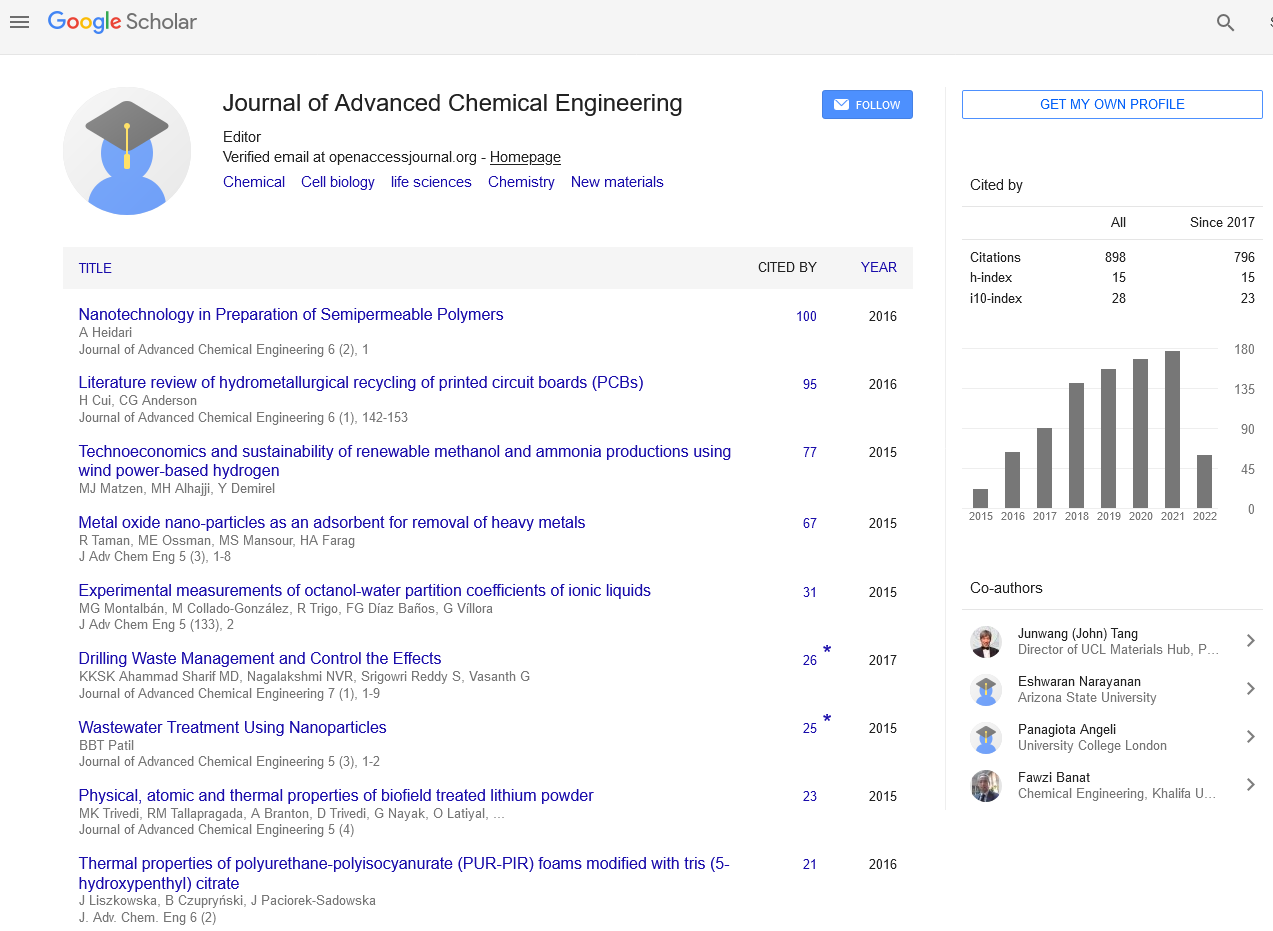Indexed In
- Open J Gate
- Genamics JournalSeek
- Smithers Rapra
- RefSeek
- Directory of Research Journal Indexing (DRJI)
- Hamdard University
- EBSCO A-Z
- OCLC- WorldCat
- Scholarsteer
- Publons
- Geneva Foundation for Medical Education and Research
- Google Scholar
Useful Links
Share This Page
Journal Flyer

Open Access Journals
- Agri and Aquaculture
- Biochemistry
- Bioinformatics & Systems Biology
- Business & Management
- Chemistry
- Clinical Sciences
- Engineering
- Food & Nutrition
- General Science
- Genetics & Molecular Biology
- Immunology & Microbiology
- Medical Sciences
- Neuroscience & Psychology
- Nursing & Health Care
- Pharmaceutical Sciences
Polymers and nanocomposites to remove inorganic contaminants in water
Joint Event on 8th Edition of Biopolymers & Bioplastics & Polymer Science and Engineering Conferences
October 15-16, 2018 | Las Vegas, USA
Bernabe Luis Rivas Quiroz
University of Concepcion, Chile
Keynote: J Adv Chem Eng
Abstract:
Membrane filtration easily allows this separation by means of the method known as the liquid-phase polymer-based retention (LPR) technique. Applications of water-soluble polymers to the homogeneous enrichment or selective separation of various metal ions from dilute solutions have been reported. Through to washing or enrichment methods, Cr(VI), V(V), Mo(VI), B(V), and As(V) removal experiments were carried out at different pH using water-soluble cationic polymers (WSCPs) containing quaternary ammonium salts. The results showed the highest retention capacity of oxyanions depending on the pH. Polymer-clay nanocomposites researchers have presented a great attention from the scientific community because nanocomposites materials present enhanced properties (mechanical, thermal, and barrier properties) compared with starting material (unloaded polymers). The use of polymer matrix with organic functional with the capability to retain ion and filler such as clays lead to nanocomposite ion exchange resins. We have studied polymer nanocomposite loaded with layered double hydroxide (LDH) as sorbents for oxyanions such as arsenate, chromate, and vanadate. Under different experimental conditions, the composite exhibited a high sorption reaching almost a 100% of removal. Also, the sorption of oxyanions presented a fast kinetics. Selectivity experiments showed that there is not a significant decrease in sorption capacity.
Biography :
Bernabé L Rivas has completed his PhD at the University of Concepcion (1980) and postdoctoral studies from Tuebingen University, Germany with Humboldt Foundation Fellows (1989-1991). He is the Vice Rector of the University of Concepción. The leader of the research group about Synthesis and Applications of -Functional Polymers, Polyelectrolytes, Resins with Retention Properties for Pollutants Ions.–Polychelatogens in combination with ultrafiltration membranes. Polymer-metal complexes as biocides. Nanocomposites from polypropylene and biopolymers. He has published more than 400 papers in reputed journals, 29 chapter of books, h factor 34, and has been serving as an editorial board member of journals.
E-mail: brivas@udec.cl


